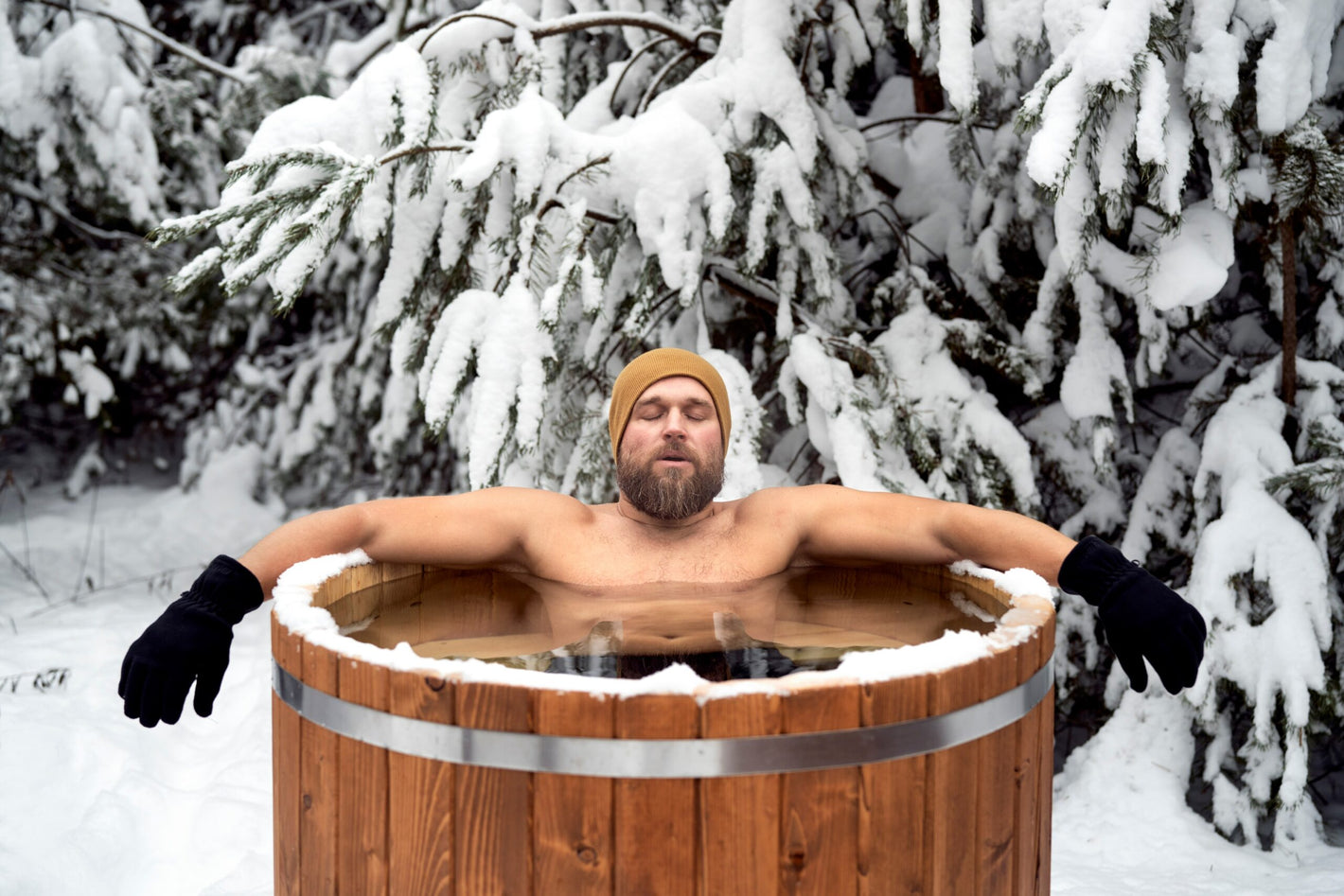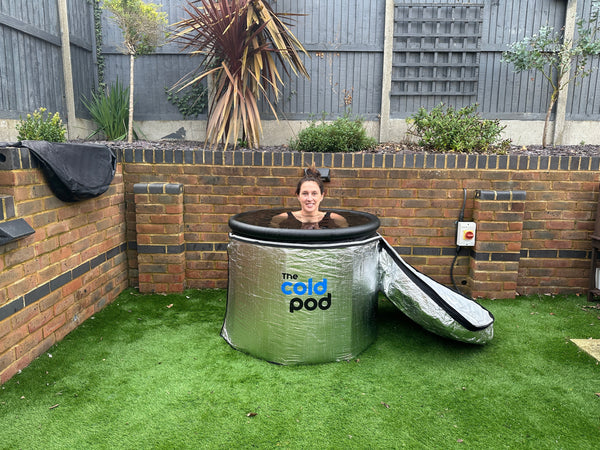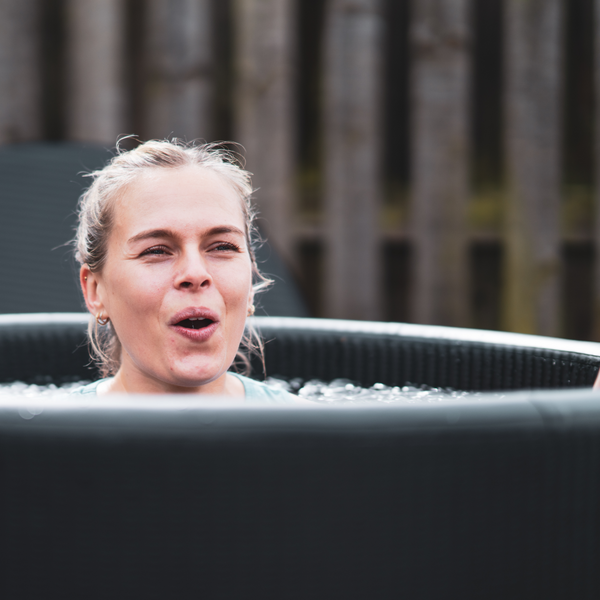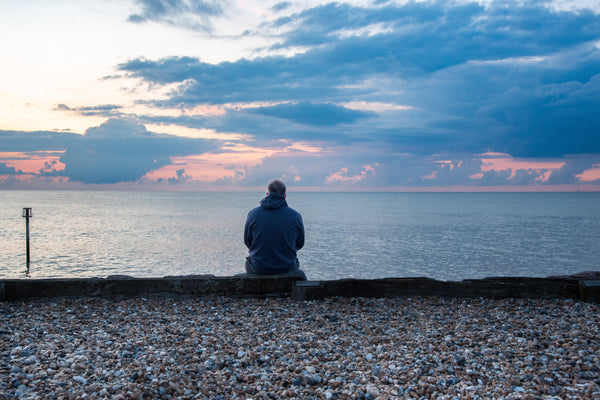Introduction
In a world where societal expectations often clash with the realities of inner turmoil, the importance of discussing men’s mental health cannot be overstated. Men, like anyone else, grapple with a spectrum of emotional challenges, from stress and anxiety to depression and beyond. Yet, for too long, there has been a prevailing stigma. This has silenced their struggles and discouraged open conversations about mental well-being.
Enter Men’s Mental Health Awareness Month—a timely and essential occasion dedicated to shedding light on the mental health issues faced by men. As well as challenging the deeply ingrained stereotypes that can prevent them from seeking help. This annual observance serves as a rallying cry to break free from the shackles of silence and ignorance. Creating a space where men can find the support and understanding they need.
But what does this have to do with ice baths, you might wonder? It’s a valid question, and one that we’ll delve into. As we explore how something as unconventional as immersing oneself in icy water can play a significant role in advancing the cause of men’s mental health. Ice baths are often associated with physical recovery and resilience. But they have now emerged as an unexpected but powerful tool in the fight against mental health stigma.
In this blog post, we’ll uncover the surprising connection between cold exposure and mental well-being. We’ll also examine how ice baths are helping to freeze the stigma surrounding men’s mental health issues. Join us on this journey of discovery, as we bring the spotlight to an unconventional yet impactful approach to supporting men’s mental health. Especially during this important month of awareness.
Men’s Mental Health Awareness Month
Men’s Mental Health Awareness Month, which typically falls in November, holds significant importance in the ongoing effort to address and destigmatise mental health challenges faced by men. During this month-long observance, individuals, organisations, and communities come together to raise awareness. As well as provide support, and promote open conversations about men’s mental well-being.
The Significance of Men’s Mental Health Awareness Month
Men’s Mental Health Awareness Month serves as a dedicated period to draw attention to the unique mental health struggles that men often encounter. It acknowledges that gender-based expectations and societal pressures can sometimes create barriers for men to express their emotions. Preventing them from seeking help, or engaging in discussions about their mental health.
The Prevalence of Mental Health Issues in Men
It’s essential to recognise that mental health issues do not discriminate by gender. Men, like women, can experience a wide range of mental health challenges. Including depression, anxiety, stress, post-traumatic stress disorder (PTSD), and more. Statistics consistently show that many men grapple with these issues. But cultural norms and stigma can make it difficult for them to acknowledge and address their mental health needs.
Reducing Stigma Around Men’s Mental Health
One of the primary goals of Men’s Mental Health Awareness Month is to reduce the stigma associated with men’s mental health struggles. Stigma can manifest in various forms. From the perception that seeking help is a sign of weakness to the belief that men should always appear strong and in control of their emotions. By challenging these stereotypes and fostering an environment of empathy and understanding, we can create a safer space for men to express their feelings and access the support they require.
As we journey through this blog post, we will explore an unconventional yet promising approach to supporting men’s mental health during this special month—ice baths. These icy immersions may seem far removed from mental health discussions. But as we’ll discover, they are intimately connected in their pursuit of breaking down the barriers of silence and stigma surrounding men’s mental well-being.
Ice Baths: An Unconventional Therapy
Ice baths, as the name suggests, involve immersing oneself in icy-cold water for a short duration. Usually between a few seconds to a few minutes. While they may sound extreme and unconventional, ice baths have a long history of use in various cultures. They are often associated with physical recovery, endurance training, and resilience building. In recent years, however, they have garnered attention for their potential impact on mental health.
The Essence of Ice Baths and Their History
The practice of immersing oneself in cold water dates back centuries. It is rooted in traditional therapies such as cold-water plunges, winter swimming, and cold showers. These practices have been prevalent in cultures around the world, from Scandinavia to Russia. As such, they have been embraced for their invigorating and health-promoting effects.
The Physical Effects of Cold Exposure
The core principle behind cold dipping is the exposure of the body to extreme cold. When immersed in cold water, the body responds by constricting blood vessels. Diverting blood flow to vital organs and increasing heart rate. This reaction is known as the cold shock response. It is accompanied by a rush of endorphins and a heightened state of alertness.
Ice Baths in Recent Popularity
While ice baths have been a staple in the toolkit of athletes and sports professionals for years, they have gained wider recognition for their potential to benefit mental health. The rationale behind this lies in the connection between the body and the mind. The intense cold exposure of an ice bath can trigger a stress response. This, over time, may help individuals build resilience to stressors, enhance their mood, and boost their overall sense of well-being.
The Surprising Link: Ice Baths and Mental Health
At first glance, the idea of immersing oneself in icy water and mental health might seem worlds apart. However, there’s growing evidence suggesting that cold exposure through ice baths can have a positive impact on mental well-being.
The Scientific Connection Between Cold Exposure and Mental Health
The relationship between cold exposure and mental health is rooted in the physiological response that occurs when the body is subjected to extreme cold. The cold shock response, triggered by cold water immersion, releases a surge of endorphins. A group of hormones known for their mood-enhancing and pain-relieving properties. This endorphin release can create feelings of euphoria and alertness, which are often referred to as the “ice bath high.”
Potential Benefits of Ice Baths for Mental Well-Being
The potential benefits of cold dipping for mental health are multifaceted:
Stress Reduction: Ice baths may help reduce the levels of stress hormones, such as cortisol, in the body. Regular cold exposure can train the body to adapt to stress more effectively, leading to increased resilience.
Improved Mood: The release of endorphins during and after an ice bath can create a sense of calm and happiness. This mood enhancement can be especially beneficial for individuals struggling with anxiety or depression.
Enhanced Sleep: Some individuals report improved sleep quality and patterns after incorporating ice baths into their routine. Better sleep can have a significant impact on overall mental health.
Personal Stories and Testimonials
To illustrate the potential benefits of cold dips for mental health, let’s hear from individuals who have integrated cold therapy into their lives. These personal stories highlight the transformative impact of cold exposure on mental well-being:
Chris’ Story: I purchased a Cold Pod from you and must say having it nearly 2 weeks now getting into it every morning I feel more alert & more awake throughout the day.
John’s Testimonial: Cold water therapy is just amazing! Just over a week the difference is amazing. I go in it post workout – I run and hike a lot. I feel I have more endurance. My mental health is improving. I have more energy and feel ace. Happy.
Jake’s Journey: The results of the cold-water immersion seem to be pretty quick for me! Instantly feeling much better in myself and extremely alert
These stories and testimonials showcase the diverse ways in which ice baths can positively influence mental well-being. While they may not be a one-size-fits-all solution. They offer a unique and promising avenue for individuals seeking holistic approaches to managing their mental health.
Breaking Down the Stigma
One of the most formidable barriers to addressing men’s mental health is the pervasive stigma that surrounds it. Societal expectations and traditional notions of masculinity have long perpetuated the idea that men should be strong, unemotional, and self-reliant. Leaving little room for vulnerability or emotional expression. This stifling culture of silence has contributed to the underreporting of mental health issues among men. Hence, the hesitance to seek help when needed.
The Stigma Surrounding Men’s Mental Health
The stigma surrounding men’s mental health is a multifaceted issue:
Perception of Weakness: Many men fear that admitting to mental health challenges will be seen as a sign of weakness. Both by themselves and by others.
Emotional Suppression: Traditional gender roles often discourage men from expressing their emotions openly. This suppression can lead to increased internalised stress and anxiety.
Fear of Judgement: Men may worry about being judged or stigmatised if they seek help for mental health issues. Which can deter them from seeking support.
The Role of Awareness Campaigns
Awareness campaigns, such as Men’s Mental Health Awareness Month, play a crucial role in challenging and dismantling these stereotypes. These campaigns aim to:
Educate: By providing information and resources, awareness campaigns educate individuals about the prevalence of men’s mental health challenges and the importance of addressing them.
Destigmatise: Awareness efforts work to reduce the stigma associated with men seeking help for their mental health. They emphasise that seeking support is a sign of strength, not weakness.
Promote Conversations: Campaigns encourage open conversations about mental health. Creating spaces where men can share their experiences and concerns without fear of judgement.
Ice Baths as a Symbol of Strength and Resilience
Ice baths are contributing to breaking the stigma surrounding men’s mental health by becoming a symbol of strength and resilience. When men embrace cold dipping, they challenge preconceived notions of what it means to be strong and tough. They show that strength is not about suppressing emotions, but about facing challenges head-on, seeking self-improvement, and supporting one another.
The physical and mental fortitude required to step into an ice-cold bath mirrors the resilience needed to address mental health issues openly and honestly. By acknowledging that vulnerability is a part of the human experience, individuals who embrace ice baths demonstrate that seeking mental well-being is an act of courage and self-care.
Ice Baths as a Symbol of Strength
In a world that often celebrates stoicism and emotional restraint as traits of masculinity, ice baths have emerged as a surprising symbol of strength and resilience. These chilling immersions represent an unconventional approach to demonstrating mental fortitude. Challenging traditional notions of what it means to be strong and helping to shift the conversation around men’s mental health.
Embracing Vulnerability as a Strength
Ice baths require individuals to confront their own vulnerability in the face of extreme cold. The act of willingly immersing oneself in icy water can be an act of courage. One that challenges the idea that men should always appear unshakable. By embracing vulnerability, individuals who take up ice baths acknowledge that strength is not found in suppression. But in the ability to confront and manage one’s emotions.
Mental Toughness and Resilience
The practice of regularly subjecting oneself to the discomfort of cold dipping can build mental toughness and resilience. Just as physical training helps the body become stronger, enduring the intense cold can help individuals become more resilient to stressors in their daily lives. This newfound resilience can empower men to face their mental health challenges with greater strength and resolve.
Public Figures and Athletes Leading by Example
Public figures and athletes have played a significant role in popularising ice baths as a symbol of strength. When well-known individuals openly discuss their experiences with cold therapy and its positive impact on their mental health, it sends a powerful message. That it’s okay to seek unconventional methods for well-being.
Wim Hof: Known as “The Iceman,” Wim Hof is a Dutch extreme athlete who has championed the practice of cold exposure. He has used his platform to promote the physical and mental benefits of ice baths. Demonstrating that even extreme challenges can be conquered through mind-over-matter techniques.
Professional Athletes: Many professional athletes have incorporated cold plunges into their training routines. Not only for physical recovery, but also for mental resilience. Their openness about using ice baths encourages fans and followers to explore the practice.
Encouraging Open Conversations
The embrace of ice baths as a symbol of strength also encourages open conversations about mental health. When individuals proudly share their experiences with cold therapy, it becomes easier for others to discuss their own mental health journeys. These discussions create a ripple effect. Helping to break down the stigma and silence that have surrounded men’s mental health for far too long.
As we continue to explore the intersection of ice baths and men’s mental health awareness, it becomes clear that these unconventional practices are helping to redefine what it means to be strong and resilient. By breaking the ice, both figuratively and literally. Individuals are paving the way for a more inclusive and understanding approach to men’s mental well-being.
Tips for Trying Ice Baths Safely
Before embarking on an ice bath journey to potentially boost your mental well-being, it’s essential to do so safely. Cold therapy can offer numerous benefits. But it’s crucial to take precautions to ensure you have a positive and safe experience. Here are some tips to help you get started:
Consult with a Healthcare Professional
Before beginning any new wellness practice, it’s wise to consult with a healthcare professional. Particularly if you have underlying health conditions or concerns. They can provide personalised advice and ensure that cold therapy is suitable for your specific situation.
Start Gradually
If you’re new to cold plunging, start slowly. Begin with shorter exposure times and gradually increase them as you become more comfortable. For example, you might begin with 30-second immersions and work your way up to a few minutes over several sessions.
Use a Thermometer
Always use a thermometer to monitor the water temperature. The ideal temperature for an ice bath is typically around 10 to 15 degrees Celsius (50 to 59 degrees Fahrenheit). Avoid using ice that’s too cold, as extreme temperatures can be dangerous.
Choose a Safe Location
Select a safe and controlled location for your ice bath. You may want to use a dedicated ice bath tub or container designed for this purpose. Ensure that the area is free of obstacles, and there’s someone nearby to assist if needed.
Have Warm Clothing Nearby
After your ice bath, you’ll want to warm up quickly. Have warm clothing, towels, and blankets readily available to wrap yourself in immediately after getting out of the cold water.
Focus on Your Breathing
While in the ice bath, practice slow and controlled breathing. Deep breaths can help you stay calm and manage the initial shock of the cold water. Avoid hyperventilating, as this can increase the stress response.
Listen to Your Body
Pay close attention to how your body responds during and after the ice bath. If you experience severe discomfort, dizziness, numbness, or any concerning symptoms, exit the water immediately. Cold therapy should never be painful or lead to harm.
Hydrate and Refuel
After an icy dip, it’s essential to rehydrate and refuel your body. Consider drinking a warm beverage and having a nutritious snack to help your body recover.
Be Consistent
Like any wellness practice, consistency can yield the best results. Consider incorporating ice baths into your routine regularly, but always listen to your body and adjust as needed.
Seek Professional Guidance
If you’re uncertain about trying cold plunging on your own, consider seeking guidance from a trained professional. Such as a cold therapy coach or a physiotherapist. They can provide expert advice and ensure you’re using the safest and most effective techniques.
By following these tips and prioritising safety, you can enjoy the potential benefits of ice baths while minimising the risks. Remember that everyone’s tolerance for cold exposure is different. So it’s essential to tailor your experience to your comfort level and individual needs.
Spreading Awareness and Support
As Men’s Mental Health Awareness Month draws in, it’s crucial to recognise the importance of raising awareness. As well as providing support for men struggling with mental health challenges. Raising awareness not only helps to reduce stigma but also fosters a more inclusive and compassionate society. Here are some ways you can actively help this cause:
Get Informed
Start by learning about men’s mental health issues. Recognise the common challenges that men experience, and the necessity of early intervention and support. The more informed you are, the more equipped you will be to engage in meaningful conversations and advocate for change.
Share Stories and Resources
Use your platform, whether it’s through social media, a blog, or personal interactions, to share stories of individuals who have overcome mental health challenges or found solace in unconventional practices like cold dipping. Additionally, spread awareness by sharing helpful resources, such as helpline numbers, mental health websites, and information about support groups.
Participate in Awareness Campaigns
Participate in Men’s Mental Health Awareness Month alongside similar campaigns. Attend fundraising events and engage with awareness activities in your community. Your involvement can help to build a supportive network for those in need.
Encourage Open Conversations
Initiate conversations about mental health with friends, family members, and colleagues. Encourage open and non-judgmental discussions about emotions, stress, and well-being. By fostering safe spaces for dialogue, you can help individuals feel more comfortable sharing their experiences.
Support Mental Health Charities
Consider donating to mental health charities and organisations that focus on men’s mental health. These organisations often provide essential resources, support services, and advocacy efforts to break down barriers and stigma.
Be a Listening Ear
Sometimes, all someone needs is a compassionate and non-judgmental listener. Offer your support by actively listening to friends or loved ones who may be struggling with their mental health. Let them know you’re there for them and encourage them to seek professional help if needed.
Promote Self-Care
Highlight the importance of self-care and mental well-being in your own life. By prioritising self-care practices and openly discussing their benefits, you can inspire others to take steps towards their mental health.
Challenge Stereotypes
Challenge stereotypes and traditional notions of masculinity that perpetuate the stigma surrounding men’s mental health. Encourage conversations that embrace vulnerability as a sign of strength. Seek to redefine what it means to be a supportive friend, partner, or family member.
Be Inclusive
Recognise that mental health challenges affect people of all backgrounds, genders, and ages. Be inclusive in your efforts to spread awareness and offer support, ensuring that everyone feels seen and heard.
Seek Help When Needed
Lastly, if you or someone you know is struggling with mental health issues, don’t hesitate to seek professional help. Mental health professionals are trained to provide guidance, therapy, and support tailored to individual needs.
You can contribute to a more compassionate and understanding society. By actively participating in the spread of awareness and support for men’s mental health. Together, we can help freeze the stigma and create an environment where everyone feels valued. As well as supported, and able to access the help they need.
Conclusion
As we draw the curtains on this exploration of ice baths, men’s mental health awareness, and the powerful intersection of the two. It becomes evident that change is not only possible but within our grasp. In a world that has often dictated that men should silently bear their burdens. The spotlight on men’s mental health during this dedicated month signifies a monumental shift in the way we perceive, discuss, and support mental well-being.
But beyond the cold water and physical challenges lie the heart and soul of this conversation. It’s about encouraging open and empathetic dialogues, embracing vulnerability as a strength. And about redefining masculinity to encompass emotional authenticity and self-care.
As Men’s Mental Health Awareness Month reminds us, we all have a role to play in this ongoing journey. Whether you choose to try an ice bath, support mental health charities, or simply be there for someone in need. Your actions matter. By freezing the stigma and fostering a culture of acceptance and support, we create a world where men feel empowered. To seek help, share their experiences, and thrive mentally and emotionally.
In closing, remember that men’s mental health awareness is not confined to a single month. It’s a year-round commitment to understanding, compassion, and advocacy. As we continue this journey, may we find strength in vulnerability. Let us unite in our shared experiences, and the courage to break free from the icy grip of stigma. Together, we can create a future where everyone’s mental health is valued, supported, and celebrated.
Thank you for joining us in shedding light on this vital issue. May the spirit of Men’s Mental Health Awareness Month endure throughout the year and beyond.
Additional Resources
As we conclude our exploration of ice baths and men’s mental health awareness, we’d like to provide you with a list of additional resources. These resources can serve as valuable references and tools. For those interested in learning more about men’s mental health, ice baths, and related topics:
Mental Health Charities and Organisations
Mind: Website
CALM (Campaign Against Living Miserably): Website
Men’s Health Forum: Website
Cold Exposure and Ice Bath Resources
The Cold Pod: Blog
Cold Exposure Therapy: Benefits, Risks, and How to Do It Safely: Blog
The Wim Hof Method: Website
Men’s Mental Health Support and Information
Movember Foundation: Website
Time to Change: Website
Online Communities and Forums
The Cold Pod Community: Website
These resources offer a wealth of information, support, and guidance. Whether you’re looking to educate yourself, seeking help or support, or simply curious to explore further. These resources are valuable tools to aid you on your journey.
Remember, raising awareness about men’s mental health and reducing stigma is a collective effort. Your engagement and support can make a significant difference in the lives of men who may be struggling in silence. Together, we can continue to freeze the stigma and create a more empathetic and inclusive society.







